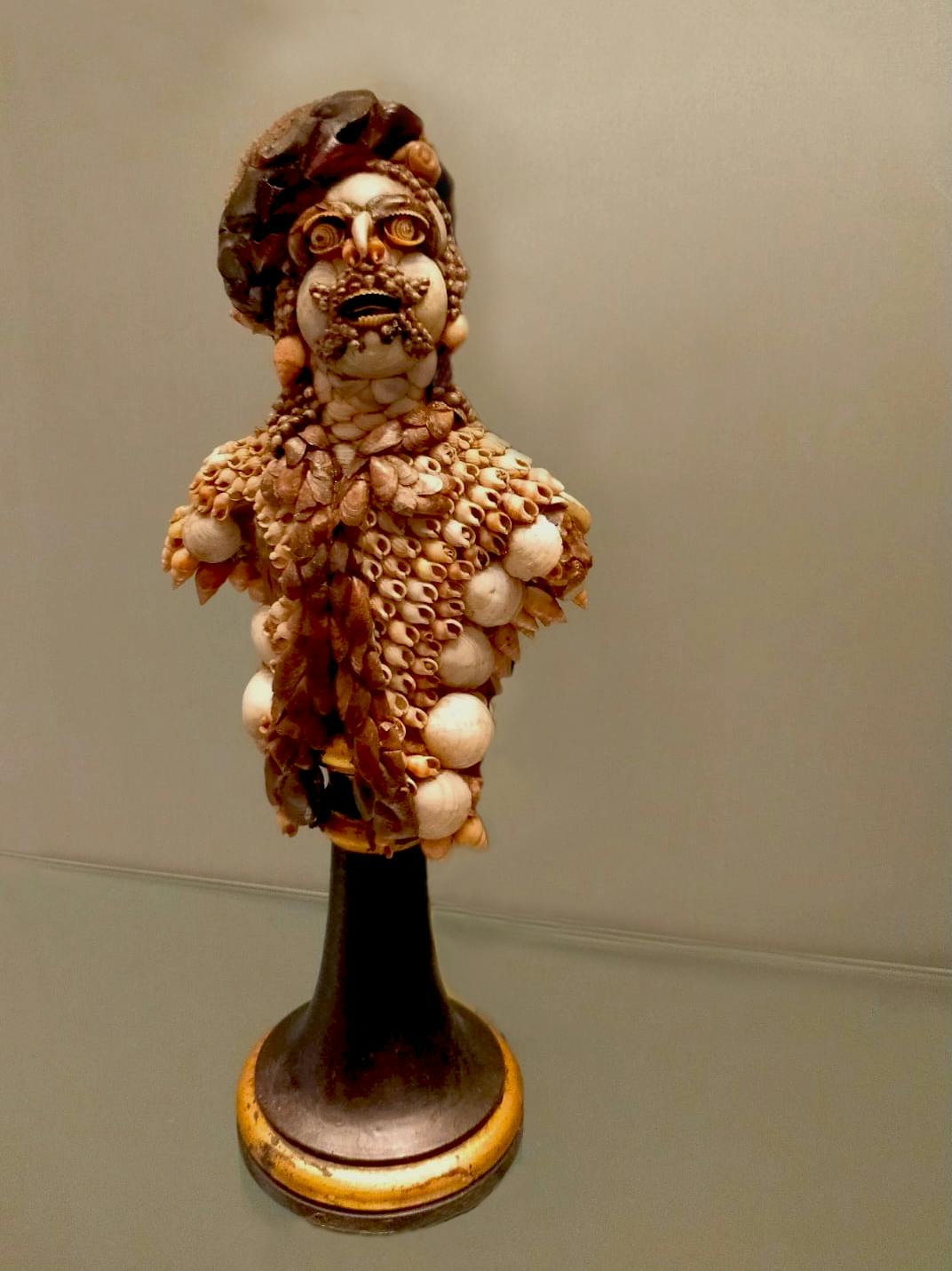Shell bust
Grand Ducal workshop (?)
The work, with a turned and partially gilded wooden base, depicts a male bust entirely covered with small snails and shells of different species. The head appears to be covered by an unusual headdress formed from the dermaskeleton of a sea urchin.
The curious object belongs to a group of four specimens similar in size and technical characteristics from the collections of Grand Prince Ferdinando de' Medici, eldest son of Grand Duke Cosimo III. An extremely refined collector, Ferdinando collected over the years a considerable number of paintings, sculptures, precious objects and curiosities, which after his premature death in 1713 became part of the family treasure. Among the possessions recorded in the inventory drawn up on the death of the prince are also the four shell busts. This unique set of artefacts was originally completed by two other female figures also covered in shells, which can be identified with two statuettes also kept in the Treasury of the Grand Dukes. The documents show that all six pieces were delivered to the turner and maker of mathematical instruments Jacopo Mariani (or Mariano), an artist cited by contemporary sources with the title of conservator of the shell works of Cosimo III. This qualification has led to the hypothesis of the existence within the Grand Ducal studios of workers specialised in the creation of works similar to those of the Grand Prince, highly sought after since the late 16th century by collectors from all over Europe for their hybrid aspect, in which artifice supports nature. The use of natural forms, such as shells, to give life to new creatures with a bizarre and at the same time fantastical appearance, has its most illustrious precedent in the composite heads painted for the courts of Vienna and Prague by Giuseppe Arcimboldo from Milan, constructed by combining images of flowers, fruit, vegetables, mammals, birds and fish. Arcimboldo's art soon contaminated sculpture as well, leading in the course of the 17th century to the production, especially in Germany, of heads and busts made of the most disparate materials, from seeds and insect elytra, used in several anthropomorphic high-reliefs in the Wunderkammer of Manfredo Settala in Milan, to shells, used to create fantastic beings such as the specimens in the Treasure of the Grand Dukes.
